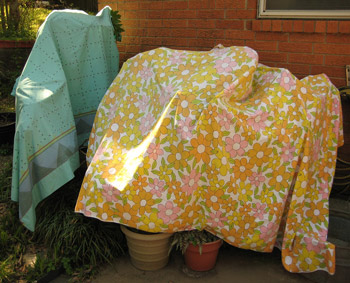Winter Freeze Injury to Plants
OSCEOLA, Ark. –

Temperatures in the upper teens and lower 20’s can cause pipes to bust as well as make some evergreen plants look rough. While some plants across the state may look grim, this type of midwinter freeze most of the time should not cause lasting damage to our gardens.
Woody plants in the temperate zone have the physics-defying ability to prevent ice crystals from forming inside plant cells when temperatures drop below freezing. The hardiest plants can delay intercellular water from freezing down to minus 40 degrees.
However, less hardy plants that we grow in the mid-south are not as efficient in preventing ice formation in their cells. Plants hardy to zone 6 can prevent water from freezing to at least minus 10 degrees, especially if the plant has had a gradual cool-down period and has had time to move internal cell water to the spaces between the cells.
Somewhat surprisingly, if plants are too dry when low temperatures arrive, they are more susceptible to winter kill. However, if low-temperature arrival is gradual and soil moisture conditions are favorable, landscape plants are in a more optimal condition to endure the low temperatures this winter.
Rapid drops in temperature, either in the fall before plants have had a chance to harden off or in the spring when they have lost their hardening and the sap has started to rise in the stems is devastating to many plants.
The Halloween freeze of the late 1990s and the Easter freeze of 2007 were extreme examples of these kinds of freeze events. The temperatures were only about 10 degrees below freezing, but the damage was severe because the cells were full of water.
Different parts of the plant have differing degrees of cold tolerance. Stem tissue (including trunks) are the most cold tolerant, with roots being the least. Crape myrtles are reliably hardy through zone 7 (0 degrees Fahrenheit), so it is possible that some trunk die-back may occur after the mid-December and early February freeze. The smaller branches are more susceptible to dieback than the larger trunks. Differences in location in the landscape, size of the plant and even clonal differences in cold susceptibility all influence dieback, so hold off on pruning until later in the spring when rising sap will identify the degree of injury. Though frozen back, none of the crape myrtles should have been killed outright.
Leaves and flower buds have intermediate hardiness between roots and stems. In north Arkansas, a few evergreens – nandinas, thorny Elaeagnus, Lorapetalums and even some azaleas – look like they have been lit with a torch with their leaves looking fried. Based on past experience, the leaves will be pushed off by new foliage when spring arrives and the plants should not be seriously affected. Azaleas with a more cold hardy pedigree (Kurumes, Girards, and Gables) should bloom normally while those with more southern ancestry will likely suffer some flower bud loss.
Root hardiness only comes into play when plants are grown in raised containers. Magnolias, hollies, and even oaks are all perfectly cold-hardy but their roots can be killed when temperatures drop below 20 degrees. Plants with a shallow roots system — azaleas and maples, for example — have more cold tolerance roots and can survive temperatures as low as 5-10 degrees without injury.
Should I prune my frost-damaged plants now or wait until spring?
The extent of winter injury is often hard to determine until warmer weather arrives so I encourage people to be patient and take a wait-and-see approach. Some pruning of winter-injured plants will be required, but how much is needed will be easier to determine in a few weeks.
Check out our home landscaping resources for more tips.
By Alan Beach
Mississippi County Extension Agent - Agriculture
The Cooperative Extension Service
U of A System Division of Agriculture
(870) 563-0236
abeach@uada.edu